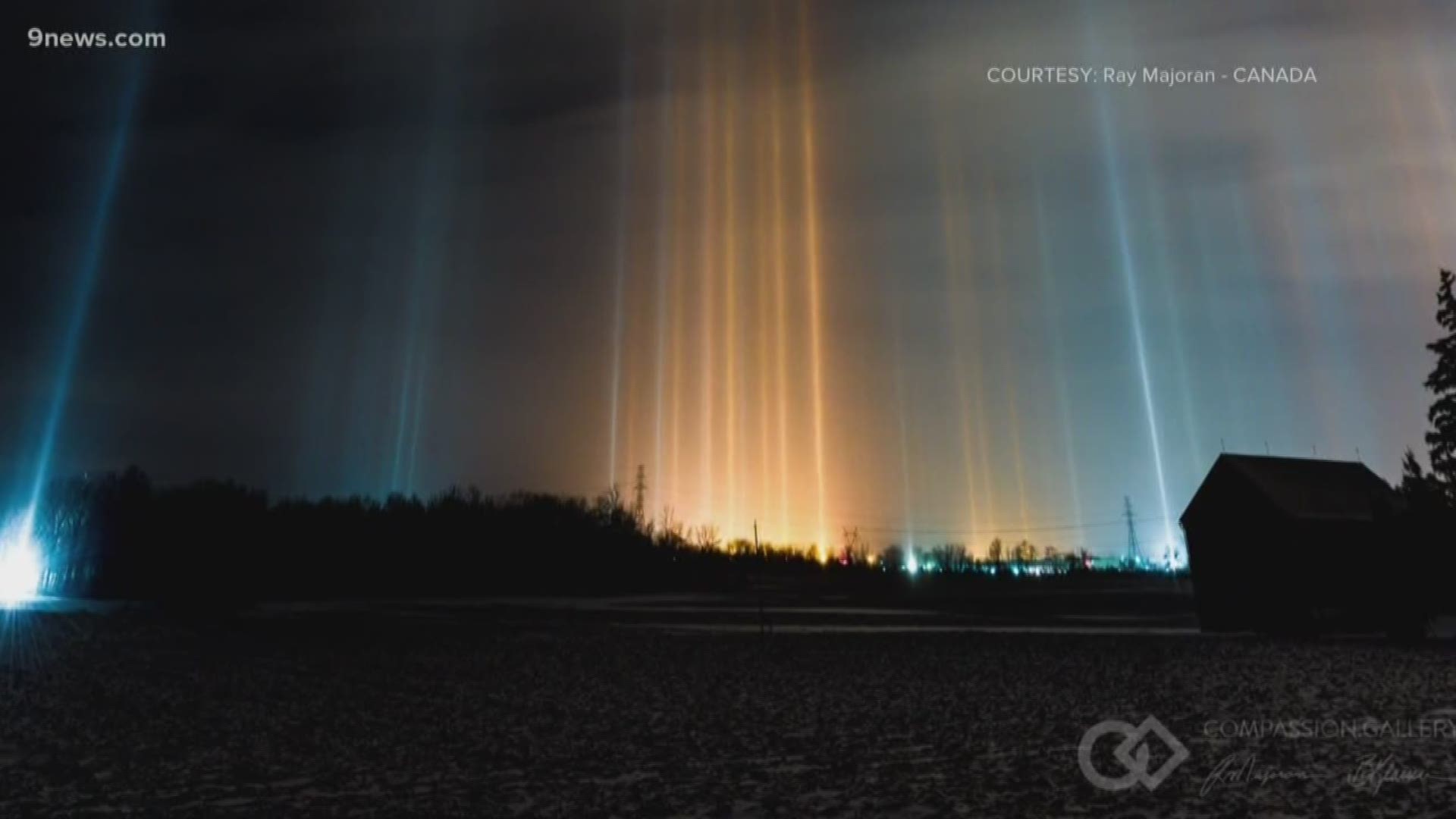DENVER — Strange beams of light extending into the sky were spotted all over the Denver area on Tuesday morning.
They almost looked science fiction; like a transporter beam to a spaceship, but the science behind these beams is real.
They are called light pillars, or sometimes ice pillars.
“Generating pillars of light requires a specific type of ice crystal, and it’s got to be a pristine ice crystal, meaning it’s just that single crystal not stuck to any of its neighbors,” said National Weather Service meteorologist Paul Schlatter, who noticed them on his way to work Tuesday morning.
Schlatter said the light pillars are very rare and it takes the perfect weather conditions to create the ice crystals needed for this atmospheric optical phenomenon.
The hexagonal plate
The shape of the ice crystal is the key. It's called a plate, and it's shaped like a hexagon. They must be light enough to float very slowly down from the sky, or almost be suspended in the air.
This plate is often the framework on which the branches of a dendritic snowflake will build, but if the plates have any branches or any imperfections on them, the pillars will not form.
Temperature
These perfect hexagonal plates usually only form at temperatures right around 8 to 12 degrees Fahrenheit. If the air is any colder or warmer, then the ice crystals may take a different shape.
Winds
The air must be calm in order to allow those plates to drift slowly downward while maintaining a horizontal position. If they collide or tumble in the breeze, the pillars won't form.
Moisture
There has to be some water vapor in the air so the ice crystals will form. If the air is completely bone dry, then no ice.


Optical Illusion
There is not actually a beam of light extending from the source light. That is just the way our eyes interpret it. You also must be at just the right angle to see light pillars. It is mainly light being reflected by the crystals that we are seeing.
“When the light passes through them, to the observer, it makes so all the complicated interactions of all the crystals make it look like a vertical column occurs,” said Schlatter.
SUGGESTED VIDEOS | Science is Cool

